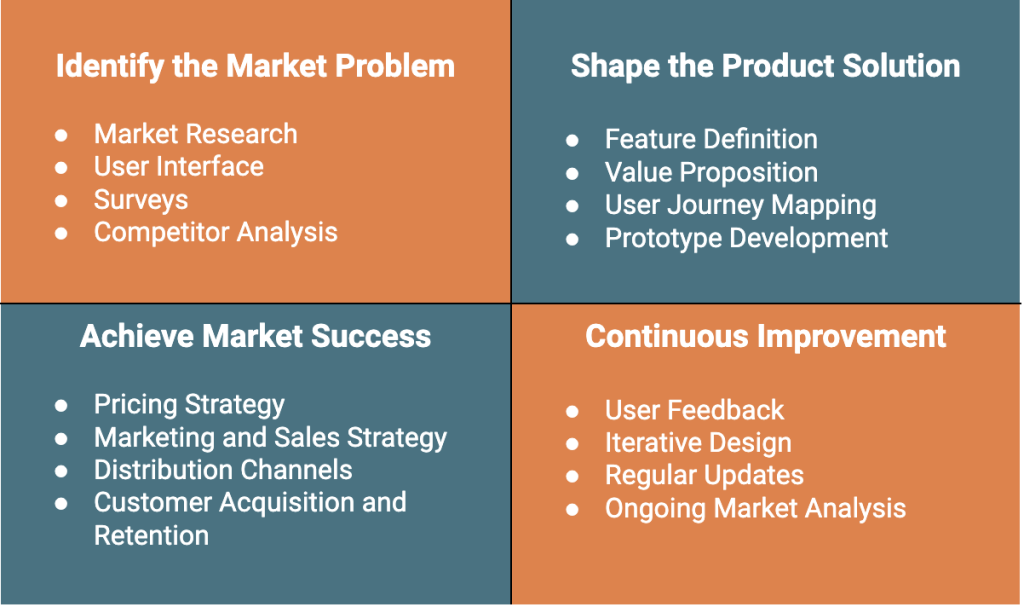
The Anatomy of a Successful Product Strategy
In the competitive landscape of product development, having a clear, compelling strategy is not just beneficial—it’s vital. Guiding a product from mere concept to market leader can seem like navigating a labyrinth. Yet, with an in-depth understanding of the essential components of a successful product strategy, businesses can transform these challenges into stepping stones towards success.
The Cornerstones of Successful Product Strategy
Welcome to our in-depth exploration. We’ll embark on a journey through the critical phases of product strategy, employing real-world examples to illustrate these concepts. Whether you’re an entrepreneur, a product manager, or a business leader, this guide will equip you with the knowledge to craft a winning product strategy that propels your product from mere imagination to market triumph.
The formulation and execution of a successful product strategy hinge on four key pillars:
- Identifying a significant market problem.
- Developing a tailored solution to address this problem.
- Strategising for market success.
- Commit to continuous improvement for sustained success.

Identify the Market Problem
The first step in crafting a successful product strategy is identifying a problem that needs solving. This process includes rigorous market research, user interviews, surveys, and comprehensive competitor analysis. For example, when Netflix recognised that consumers were frustrated with late fees for DVD rentals and the limited selection at brick-and-mortar stores, it spotted a significant market problem that needed a solution.
Shape the Product Solution
After identifying a market problem, the next step is to shape a product solution that addresses this problem. This includes defining features, carving a compelling value proposition, mapping the user journey, and creating prototypes. Netflix, for instance, developed a solution that provided unlimited movie rentals for a flat monthly fee, eradicating late fees and providing a broad selection.
Achieve Market Success
The next phase involves formulating strategies to achieve market success. This includes creating an effective pricing strategy, developing a robust marketing and sales strategy, and identifying the correct distribution channels. Netflix’s decision to shift from DVD rentals to streaming, paired with a competitive pricing strategy, was a crucial part of its plan to conquer the market.
Continuous Improvement
Lastly, a successful product strategy involves a commitment to continuous improvement. You ensure your product stays relevant and competitive by actively seeking user feedback, embracing iterative design, rolling out regular updates, and continuously analysing market trends. Netflix constantly improves its platform based on user feedback and viewing habits. They’ve also expanded their offerings by producing original content to further enhance the value they provide to users.




